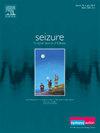Developmental and/or epileptic encephalopathy with spike-and-wave activation in sleep: A single tertiary center experience
IF 2.8
3区 医学
Q2 CLINICAL NEUROLOGY
引用次数: 0
Abstract
Objectives
This study aimed to analyze the clinical characteristics, etiology, neuroimaging, treatment, neurocognitive and EEG outcomes of patients with developmental and/or epileptic encephalopathy with spike-and-wave activation in sleep (D/EE-SWAS).
Methods
Patients diagnosed with D/EE-SWAS, between 2014 and 2021, with a spike-wave index (SWI) ≥50 % in NREM sleep EEG, were analyzed retrospectively. Outcome measures included neurocognitive assessment, SWI, and seizure frequency.
Results
A total of 80 patients were included. Median age at initial admission was 43.5 (0.03–148) months, with seizures as the main symptom in 66 (82.5 %) patients. Median age at D/EE-SWAS onset and follow-up was 92.5 (21.3–193.6), and 86.9 (12–204) months, respectively. At diagnosis, 56 patients had seizures (focal: 13, generalized: 43). Unknown group (36; 45 %) constituted the most common etiology. There was a shift towards benzodiazepines, mostly as a combination therapy, in 58 (72.5 %). At the final visit, 38 (47.5 %) of the patients had favorable cognitive outcome which was correlated with older epilepsy onset (≥3 years), normal neurological examination, unknown etiology, seizure freedom during D/EE-SWAS, normal EEG background, fewer ASMs, shorter D/EE-SWAS duration, SWI response, decreased seizure frequency, and SWAS resolution. EEG recovery occurred in 48 (60 %) (median duration: 24 months), with 12(15 %) achieving complete resolution. Of the patients, 38 (47.5 %) were seizure-free at the end of the study period.
Conclusions
Baseline neurologic examination, age at onset of epilepsy/D/EE-SWAS, etiology, and number of ASMs at diagnosis had an impact on outcomes. Etiology and number of ASMs may serve as parameters to predict treatment response, and underscore the need for tailored approaches for D/EE-SWAS.
发展性和/或癫痫性脑病伴睡眠中的峰波激活:单一三级中枢体验
目的分析发展性和/或癫痫性脑病伴睡眠峰波激活(D/EE-SWAS)患者的临床特征、病因、神经影像学、治疗、神经认知和脑电图结果。方法回顾性分析2014 ~ 2021年诊断为D/EE-SWAS的非快速眼动睡眠脑电图峰波指数(SWI)≥50%的患者。结果测量包括神经认知评估、SWI和癫痫发作频率。结果共纳入80例患者。入院时中位年龄为43.5(0.03-148)个月,66例(82.5%)患者以癫痫发作为主要症状。D/EE-SWAS发病和随访时的中位年龄分别为92.5(21.3-193.6)个月和86.9(12-204)个月。诊断时,56例患者有癫痫发作(局灶性13例,全身性43例)。未知组(36;45%)是最常见的病因。有58例(72.5%)转向苯二氮卓类药物,主要作为联合治疗。最后一次访视时,38例(47.5%)患者的认知预后良好,这与癫痫发作年龄较大(≥3年)、神经学检查正常、病因不明、D/EE-SWAS期间癫痫发作自由、EEG背景正常、asm减少、D/EE-SWAS持续时间短、SWI反应、癫痫发作频率降低和SWAS缓解有关。48例(60%)脑电图恢复(中位持续时间24个月),12例(15%)完全恢复。在这些患者中,38人(47.5%)在研究结束时没有癫痫发作。结论基线神经系统检查、癫痫发病年龄/D/EE-SWAS、病因和诊断时asm次数对预后有影响。asm的病因和数量可以作为预测治疗反应的参数,并强调需要针对D/EE-SWAS量身定制的方法。
本文章由计算机程序翻译,如有差异,请以英文原文为准。
求助全文
约1分钟内获得全文
求助全文
来源期刊

Seizure-European Journal of Epilepsy
医学-临床神经学
CiteScore
5.60
自引率
6.70%
发文量
231
审稿时长
34 days
期刊介绍:
Seizure - European Journal of Epilepsy is an international journal owned by Epilepsy Action (the largest member led epilepsy organisation in the UK). It provides a forum for papers on all topics related to epilepsy and seizure disorders.
 求助内容:
求助内容: 应助结果提醒方式:
应助结果提醒方式:


